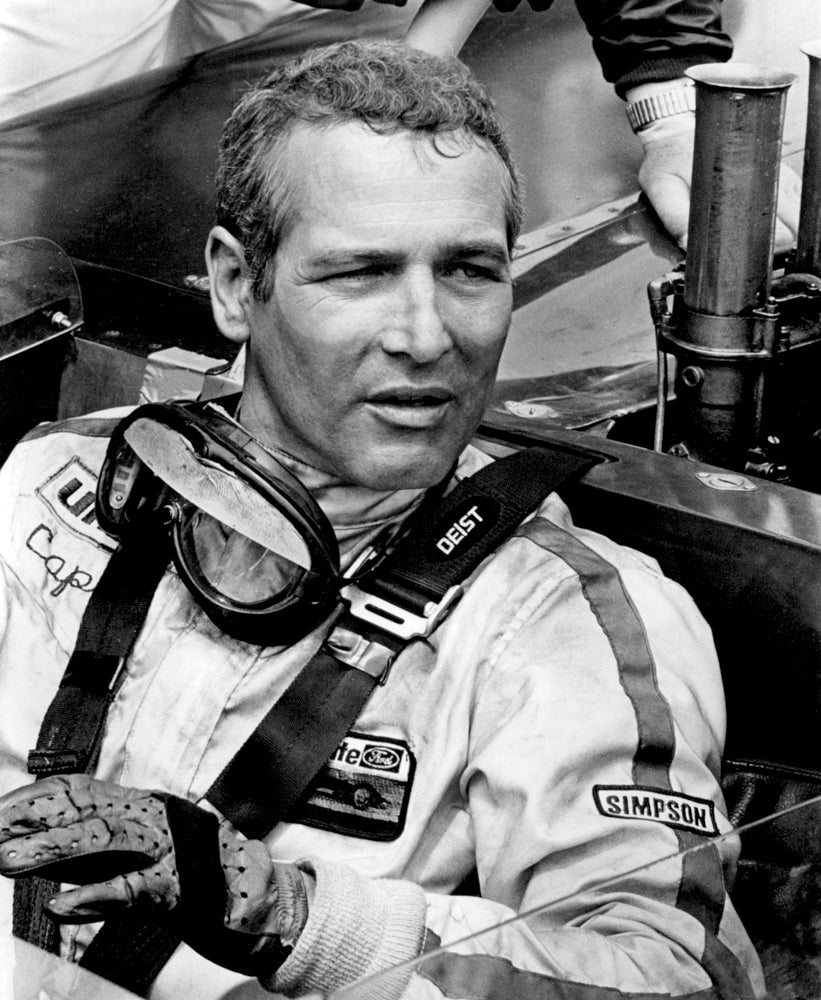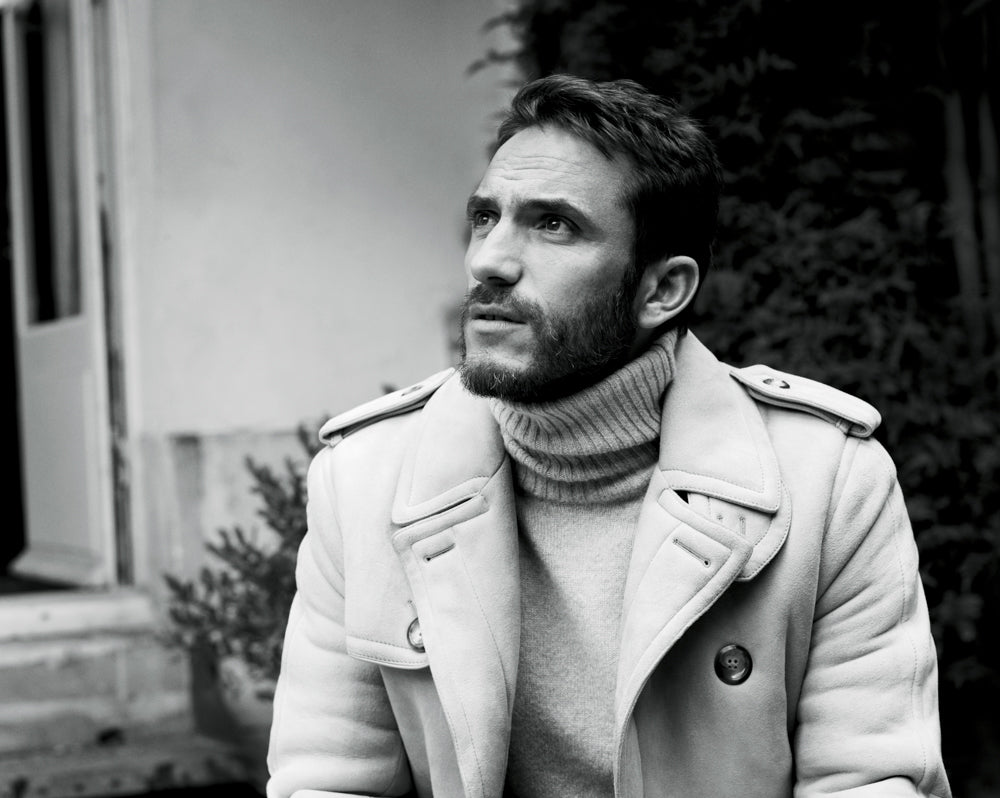
Driven
DRIVEN


"There have been other tracks that separated the men from the boys. This is the track that will separate the brave from the weak after the boys are gone." JIMMY THOMPSON On Daytona International Speedway
In 1963, a pair of watches now inextricably linked to one another began their great journey into the history books of modern horology and motorsports. Rolex’s Cosmograph Daytona and Heuer’s Carrera chronograph have both reached great heights in the half century since, but they began their lives as relative technical twins.
Bearing the reference number 6239, the earliest Daytonas marked a dramatic shift in design for Rolex chronographs. They were the first crown-bearing chrono to feature off-colored registers, meaning a black dial would hold white registers and vice versa. The earlier Rolex chronographs, references 6238 and 6234, use simple monochromatic dials. These multi-colored dials allowed their wearers to quickly read them at a glance, something racers had always struggled with. Additionally, the Daytona was the first from the Geneva manufacturer to feature a tachometer on the bezel of the watch. This also allowed for easier reading and, when measured distance over time, would tell the driver his speed without much fuss. It should be noted that while the 6239 was the first Rolex to feature a tach on the bezel, the first chronograph with such a trait was actually 1957’s Omega Speed-master, reference 2915, which, before its selection as the official watch of the American space program, was designed to be a driver’s chrono as well.
The very earliest Daytonas — those manufactured in 1963 specifically — bare special markings found only in watches made that particular year. These are the small characteristics that make the so-called Mark I so special. First, the earliest Daytonas went by another name entirely. Early advertisements, which date as late as March of 1964, feature them as “Le Mans”. The name took aim at an international approach to marketing. After a 12-month trial as Le Mans, Rolex quickly and profoundly changed the name of its latest chronograph to “Daytona,” making the original “Le Mans” advertisements highly sought after.


Also, the earliest known examples of the 6239 Daytona are considered transitional models, as their case back reads “6238,” their immediate predecessor, and so called “Pre-Daytona.” On the dial lives a small dash under the word “Cosmograph,” which collectors call “Underlines.” It’s believed that the luminescent material on the dials were originally tritium as opposed to the more radioactive radium. The earliest reference 6239s feature a dial totally void of the word “Daytona” and is signed “Swiss” at 6 o’clock twice, though just one will be visible. The Mark I Daytona, or “Double Swiss Underline” is easily one of the most important chronographs in the world. While other exotic variations of the Daytona — like the “Paul Newman” dials — fetch more interest from novices, the earliest Daytonas with the strange transitional markings are far more compelling and considerably more rare.
What ties the Daytona to the Carrera in such a finite way goes beyond the simple fact that they were introduced with the same purpose in at the exact same time. In fact, the early Carreras were all but identical to the early Daytona watches. While the Carrera used a monochromatic dial, it did not feature a tachymeter scale at all (Jack Heuer, who designed the Carrera, says he did this for legibility and cleanliness). Heuer and Rolex shared countless suppliers at the time. The two resulting racer’s watches shared a myriad of components. Foremost, the same manually wound Valjoux 72 chronograph powered both watches. They both feature 36mm cases produced in the same factory. Their dials both featured sunken ribbed registers, and their hands are filled with the same luminescent material.
The earliest Carreras feature a few traits not found in later examples, like the absence of the tritium “T” at 6 o’clock, seen on all later manually wound Carreras. But while the 1963 Carrera and the 1963 Daytona are seemingly identical in terms of material goods, the values in today’s market are dramatically different thanks to the paths taken by each brand following the launch. Rolex remained true to its core with limited deviation in model ranges, while Heuer (later TAG Heuer) expanded the Carrera line into many different directions. Today, a 1963 Mark 1 Carrera would trade between $6,000 and $8,000, while a Mark 1 Daytona has a market value between $50,000 and $80,000. Still, these two watches remain atop the list of the purest expression of racing watches, no matter their value.


The split between Rolex’s Daytona and Heuer’s Carrera compounded dramatically in 1969 when Heuer introduced the first self-winding chronograph in the Caliber 11. Its modular architecture and left-handed crown required a bulkier case that would come to represent the racing scene of the 1970s. Rolex opted to continue using the simple Valjoux 72 – based movements through the 1970s and mid 1980s. It is perhaps the ultimate irony that it was Heuer’s drive for innovation with the Caliber 11 that sent the line into a less desirable path by today’s standards.
During the 1980s Rolex’s Daytona received its first self-winding movement with the help of a modified Zenith El Primero caliber — the 4030 — while Heuer languished under several ownership changes. Once purchased by TAG, Heuer re-introduced the Carrera using a variety of ETA and Valjoux-based movements. With that, the Carrera took a secondary position to the Daytona, more in line with entry-level chronographs than Rolex’s luxury products.


In 2000, Rolex unveiled its first in-house chronograph movement, the 4130, which even today is considered the par excellence for industrial chronograph calibers. Ten years later, TAG Heuer announced its own column-wheel, vertical clutch, in-house chronograph in the Caliber 1887, with an aesthetic update that harkened back to the earliest Carreras, though in a modern size. It was considered by many to be the rebirth of one of the great chronographs.
At Basel World this year, both TAG Heuer and Rolex unveiled commemorative 50th anniversary models. For the Carrera, we saw the first “Bullhead” with pushers and crown at 12 o’clock, a nod to the avant-garde nature of the line’s past. As for the Daytona, it was cased entirely in platinum with a ceramic brown bezel for the first time in history. These two latest iterations of Rolex’s and Heuer’s most iconic racing watches may be far more complex than their forefathers, but they speak bounds to what the Carrera and the Daytona mean to collectors in general. No matter which you choose there is simply no substitute for these two archetypes of driver’s chronographs.


